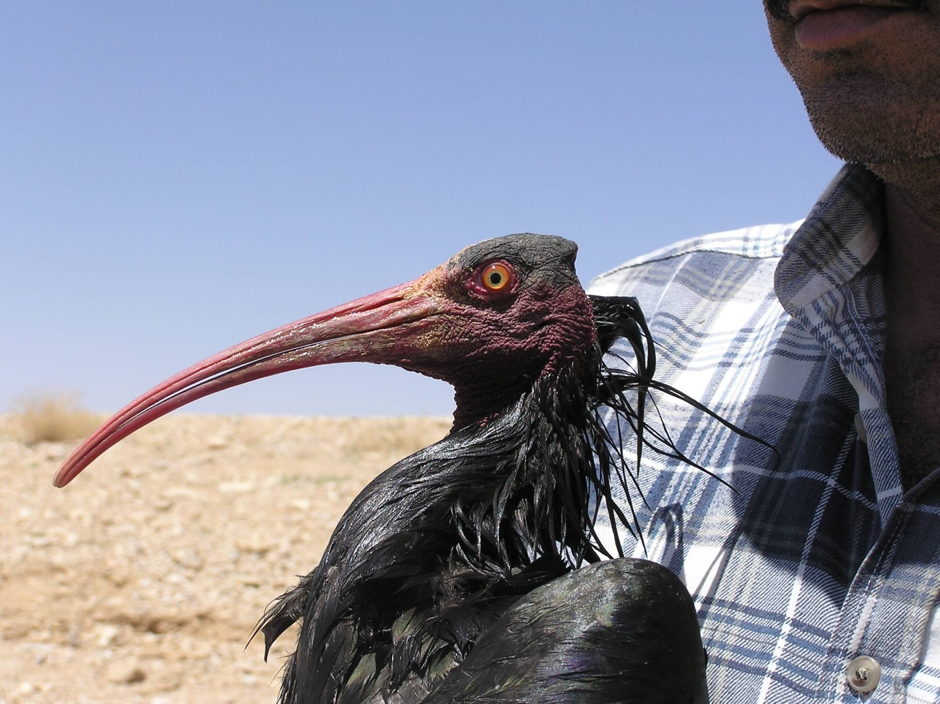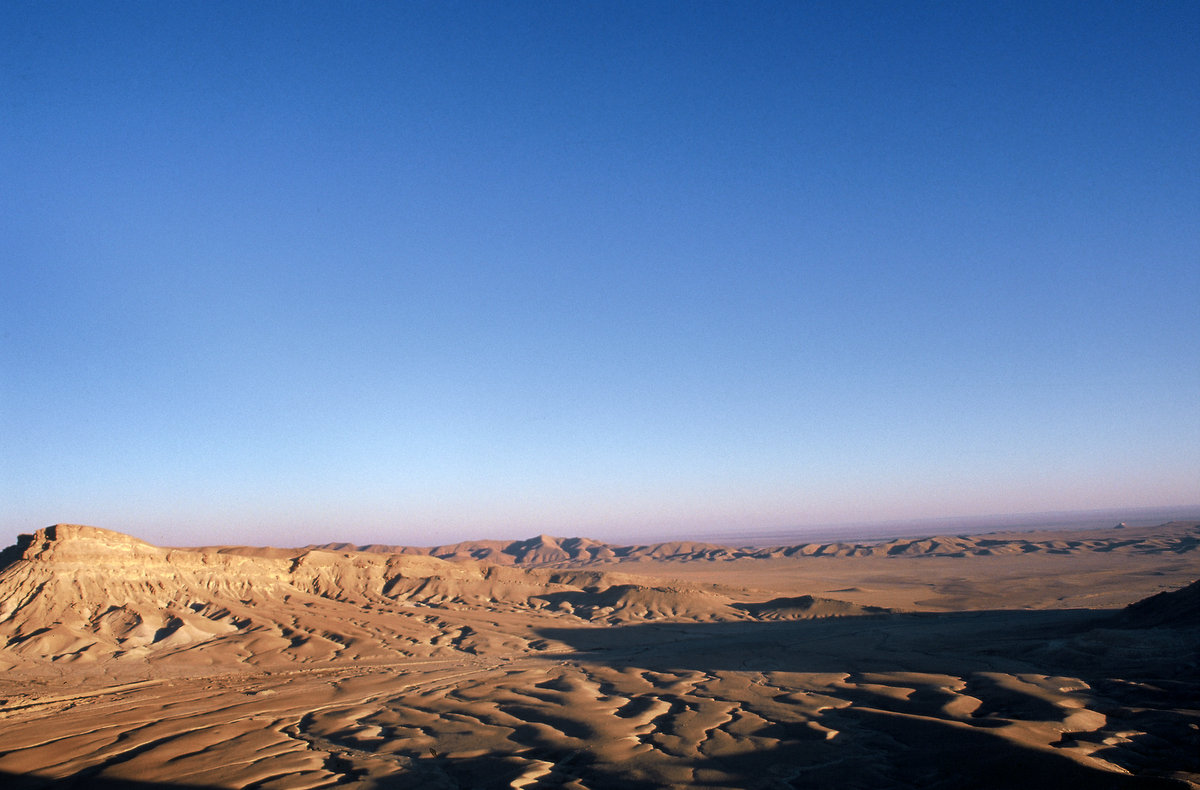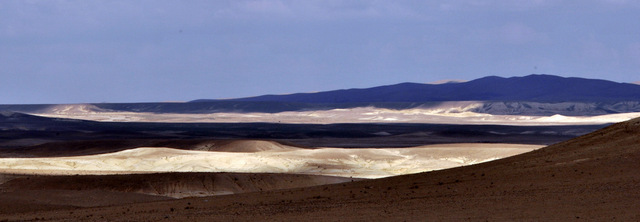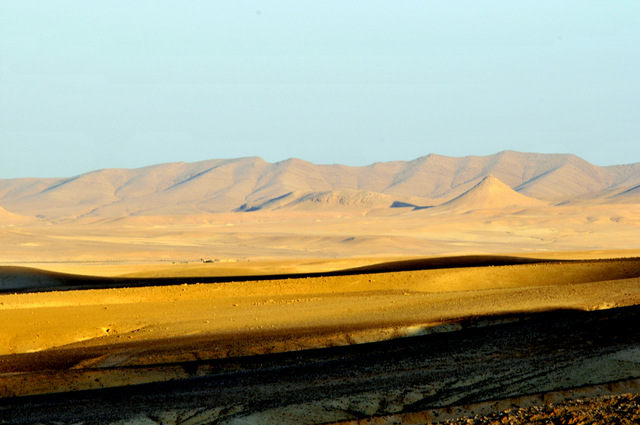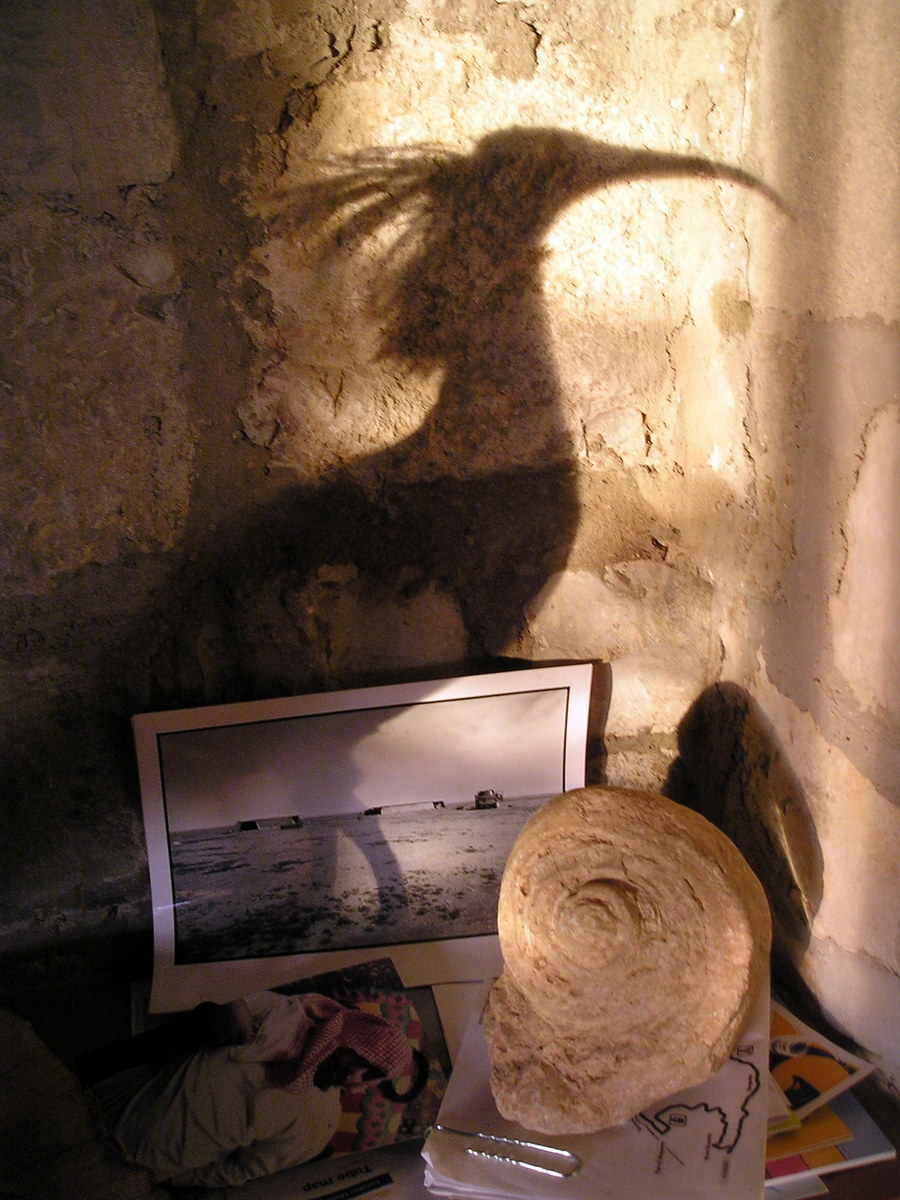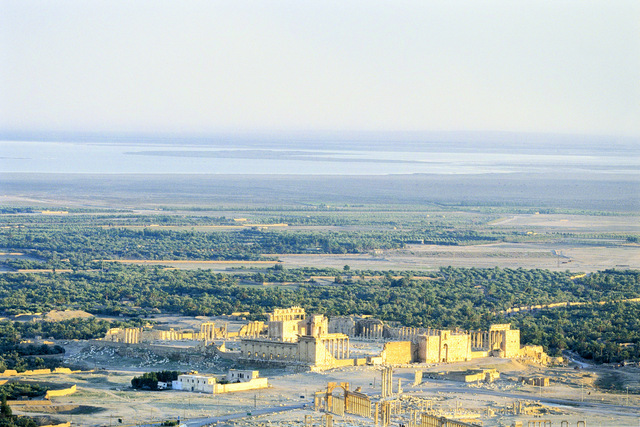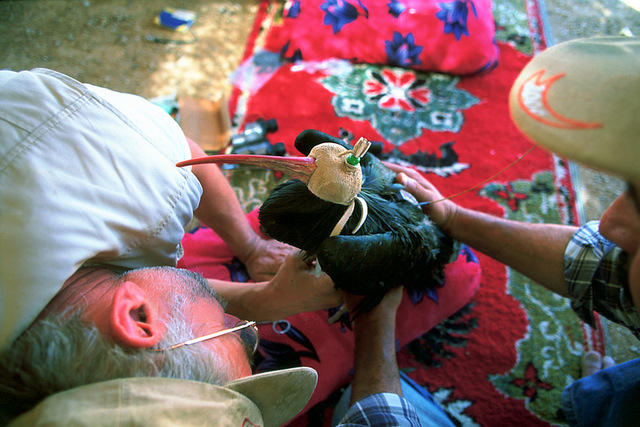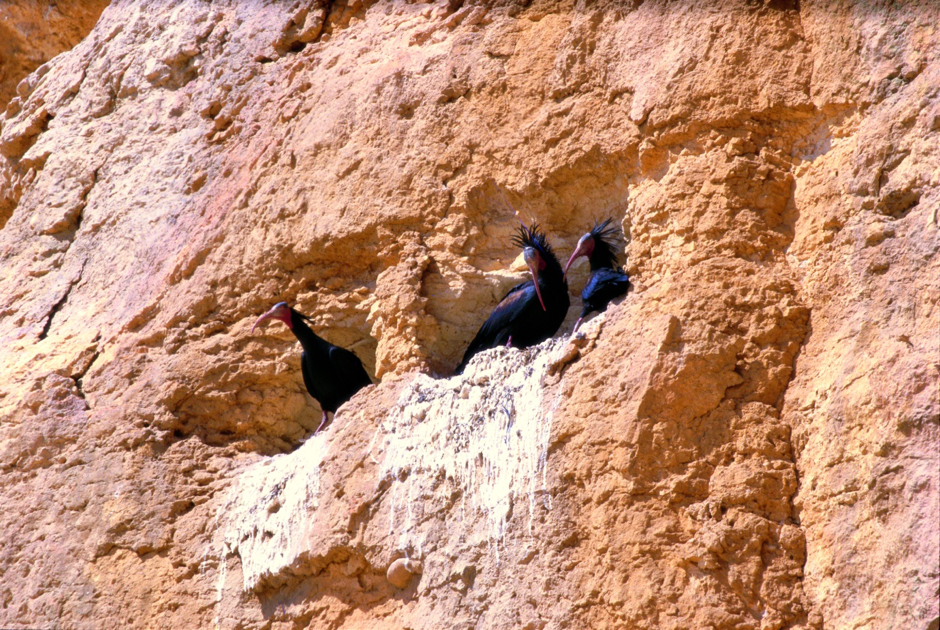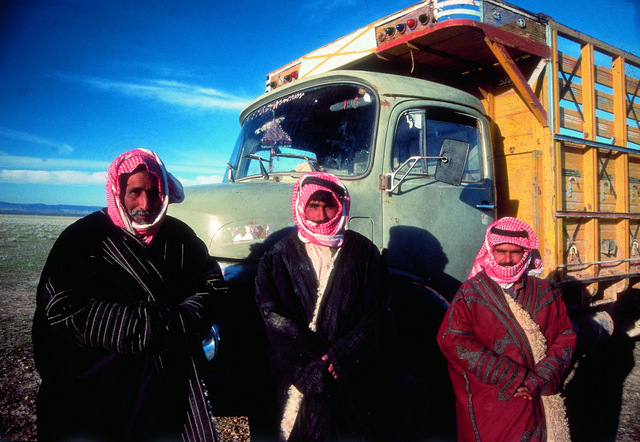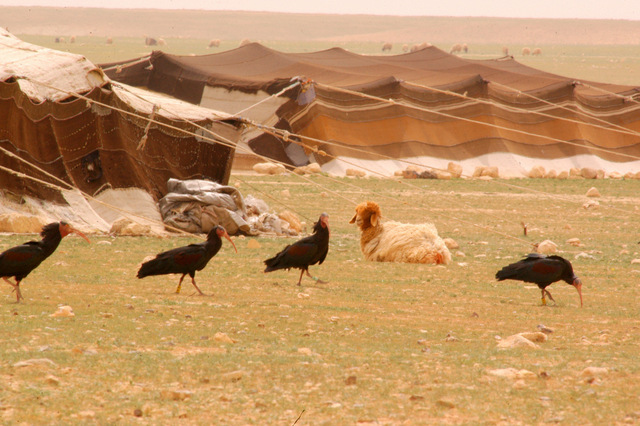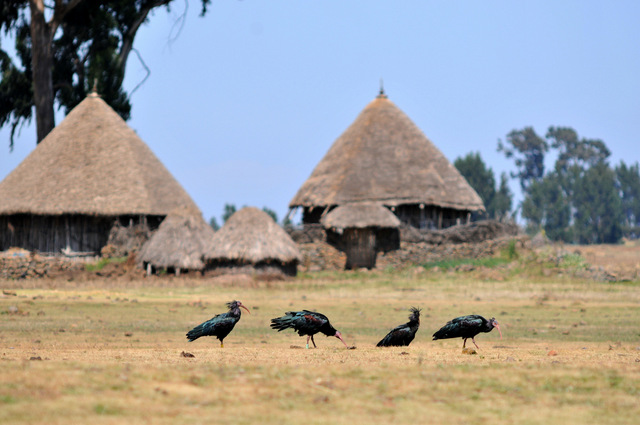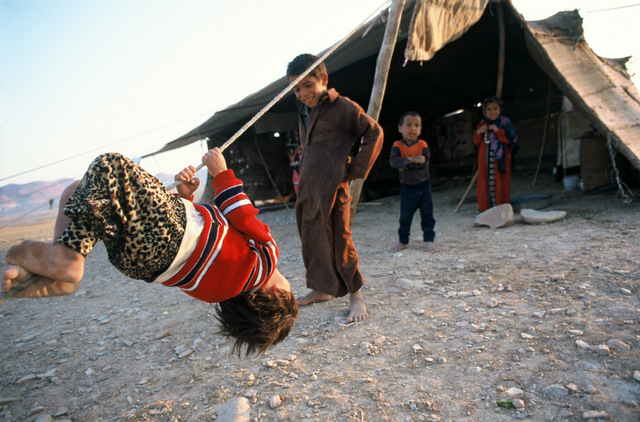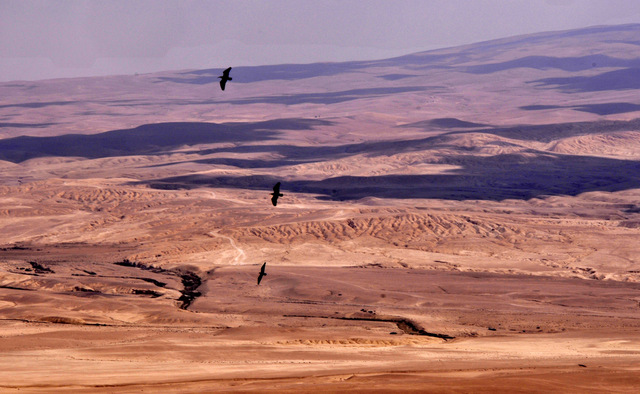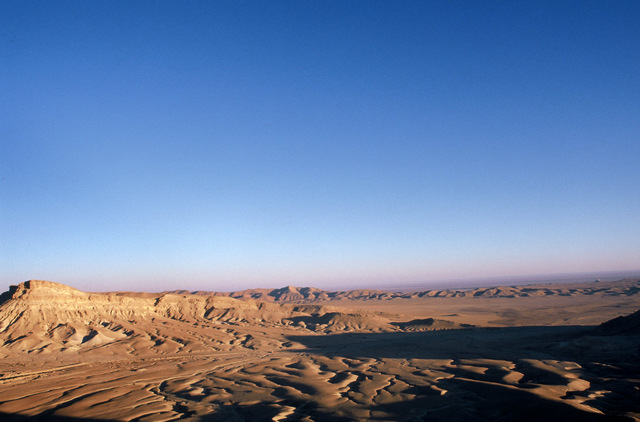2002-2011: NINE YEARS OF CONSERVATION EFFORTS BETWEEN ARABIA AND EAST AFRICA
A technical report and photo-book prepared by Gianluca Serra | released in January 2017
A conservation struggle against time was fought in Syria between 2002 and 2011, the aim being to prevent the last known and genetically unique population of Northern Bald Ibis (Geronticus eremita) in the Middle East from becoming extinct.
The N. Bald Ibis had been declared extinct in Syria from the early 30s and in the whole Middle East in 1989. The news of the discovery of a relic colony of 7 individuals of this species in Palmyra desert, Syria, in 2002 made headlines on international media; reviving the hopes to be still on time to rescue the oriental population from extinction – and suddenly turning the species as the most threatened one in the Middle East.
The discovery was the culmination of 2 years extensive fauna surveying and inventorying of the Palmyra desert, under a UN-led and Italian-funded multi-year aid project, that greatly benefited from the use of traditional ecological knowledge of nomads and local hunters.
The Northern Bald Ibis as a species includes another relic population made up of ca. a hundred pairs, resident in coastal Morocco, completely separated and genetically different from the oriental one that is long-range migratory.
The species as a whole was listed as Critically Endangered globally by the IUCN’s Red List since 1994 (turning it as the most threatened bird of the Western Palearctic). The species also features as #12 in the global list of the most genetically and evolutionary unique creatures of the world .
The oriental Northern Bald Ibis historically had an important cultural significance in the whole Middle East; it features, unmistakably, in an ancient hieroglyph from 4500 years ago.
The conservation saga in Syria began well in 2002 and thanks to sufficient funds and means made available by the Italian Aid Agency, achieved important results between 2002 and mid 2004 (14 chicks fledged successfully from 3 breeding pairs through 3 breeding seasons).
Due to a change of management a gap in efforts ensued, starting from mid 2004: the first significant setbacks emerged in the form of two breeding failures in 2005 and 2008. The project continued with alternating fortunes up to 2009-2010 while the colony size in parallel declined inexorably.
The migratory route was spectacularly reconstructed in 2006 thanks to satellite telemetry and the wintering grounds were discovered and explored. The tracking of migrating birds in the following years enabled to put on focus the major source of mortality for the colony: the hunting on the section of the migratory route running along western Saudi Arabia.
At the onset of the unrest in Syria in 2011 the fate of the last N. Bald Ibis colony of the Middle East was sealed with only one pair left. 2015 was the first year that no bird returned to the breeding grounds in Palmyra – the same year when the millenary enchanted ruins of Palmyra were destroyed by a ruthless war.
The recent – most likely final- extinction of this ancient and iconic population of N. Bald Ibis is fully documented. This web site and the publication “The Last Flight of the Ancient Guide of Hajj” (downloadable for free at the link aside) were designed to provide an independent recount of this conservation saga and to set the record straight.
Lessons learned from this conservation experience are quite clear and can be shared by the author privately, upon request, with interested conservationists and practitioners.
At this current turn the planet is losing hundreds, if not thousands, of species every year in the almost total indifference of the public opinion, governments and international organizations. Scientists called this phenomenon The Sixth Wave of Mass Extinction on Planet Earth.
Each species is a small universe in its own, different from all the others due to its genes, anatomy, behaviour, vital cycle, role in the ecosystem; a self-sustaining system, created in the course of an evolutionary history, complex beyond our imagination. Each species deserves that researchers devote their careers on it, and poets and historians celebrate it. Nothing even closely similar can be said about a proton or an hydrogen atom. In few words, Reverend, this is the strongest and most transcendent moral argument, provided by science in view of supporting the urgent need to save the Creation.
E.O. Wilson
.
.
.
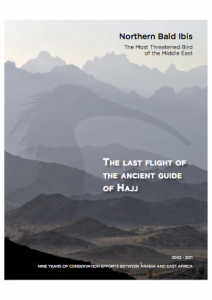
Download “The Last Flight of the Ancient Guide of Hajj” (PDF 6 MB)
A hardcopy version is available for sale on the Natural History Book Service (NHBS) web site at the mere cost of the printing
.
It is our duty to share and maintain life. Reverence concerning all life is the greatest commandment in its most elementary form.
A. Schweitzer

